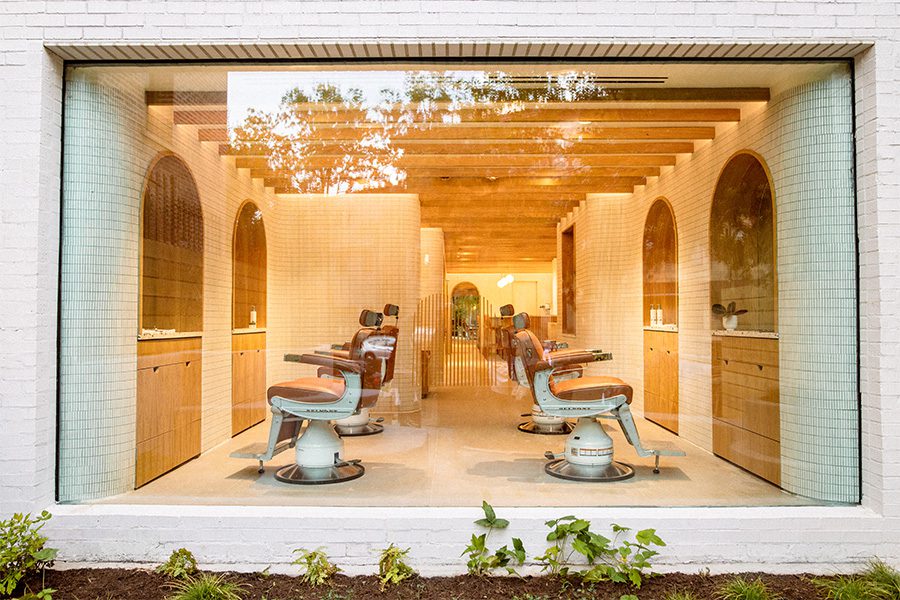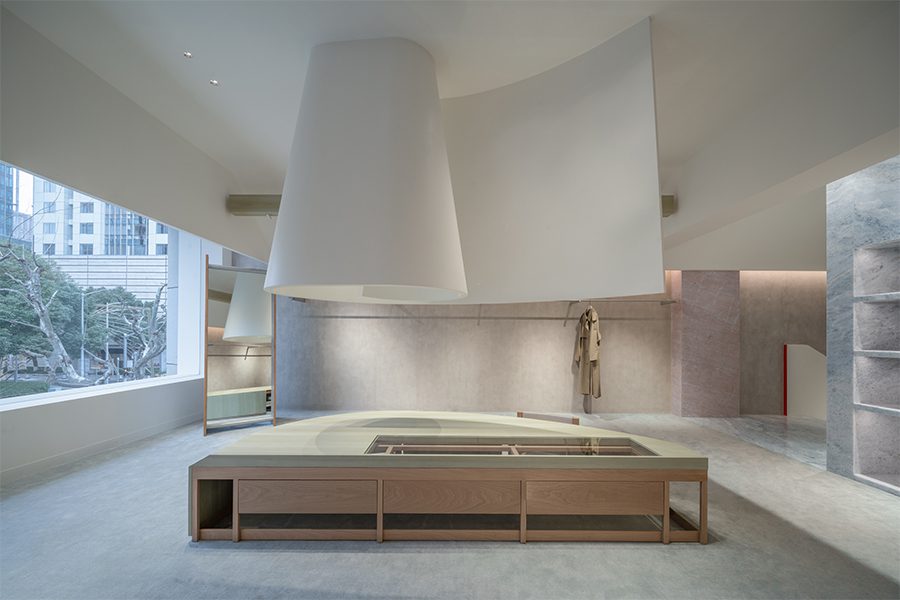Unlike the barbershops of the past, which were reminiscent of an exclusive boys’ club, Manifest in Washington, DC’s Adams Morgan neighborhood is a contemporary reimagining that celebrates the barbershop’s role in Black culture as a hub for gathering.
“We wanted a place of community—a place where everyone felt safe and deserving of this kind of experience regardless of socioeconomic status, race, or sex,” says sports and entertainment entrepreneur K.J. Hughes, who opened the hybrid space in December 2021. “We wanted to make sure we presented this in a way that made you aspire.”
Although it’s the barbershop that beckons to passersby through the floor-to-ceiling windows, once they are inside the historic four-unit mixed-use townhome, customers realize that Manifest is a lifestyle destination, complete with a coffee bar and boutique inspired by famed New York department store Barneys on the ground level; hidden upstairs speakeasy Out Of Office; and the soon-to-open apartment, Abode, on the fourth floor.
Arches built into curving walls, white tiles, and terrazzo counters come courtesy of Snarkitecture. The New York studio was chosen because Hughes knew opening a regular barbershop would “fall flat,” he says, “and all the things we were trying to do could not be done without a design team that truly understood what experiential meant.”

K.J. Hughes a partner at Manifest in Washington, DC
Hughes, who runs Manifest with his partners Brian Merritt and Susan Morgan, wanted the space to conjure a warm, inviting vibe, where visitors could linger all day. “The key to hospitality is, how does it make you feel? It’s some people’s barbershop, but it’s some people’s coffee shop, and it’s other people’s boutique,” he says. “We wanted to find a way to make sure all those things could cohesively coexist.”
Come evening, Manifest is also a cocktail bar—for the few who can snag a reservation at the exclusive 30-seat lair on the second floor that is. The speakeasy, Out Of Office, continues the aesthetic from downstairs, revealing familiar motifs including rounded walls that were challenging for the contractors to construct (“They had to wet the drywall and the baseboards to curve them,” notes Hughes), and tiled archways above banquettes.
On the fourth floor (the third is dedicated to internal operations) is Abode, a soon-to-open two-bedroom, two-bathroom apartment crowned with a retractable glass roof that the public can book. This affinity for hospitality has long percolated in Hughes, a one-time party promoter who “through some twists and turns,” he says, had to drop out of Rutgers University before eventually getting a master’s degree and working as a professor at the University of Maryland. That Hughes is now able to stand on the rooftop of Manifest, a hospitality enterprise he created in his hometown all these years later, is a full-circle moment.
Manifest is also poignant because of how it recasts luxury for the Black community. “We’re hesitant to use the word luxury because the idea around luxury usually means them and not us,” Hughes says. “We wanted to be very intentional about our offering. Everything we do needed to be at the top and the highest quality. Especially as a Black business, it’s important for us to swing for the fences.”
This is the seventh episode in our HDTV video series, which offers a behind-the-scenes look at what goes into designing and developing hospitality projects.







